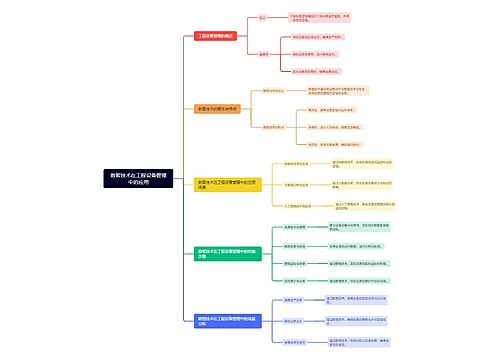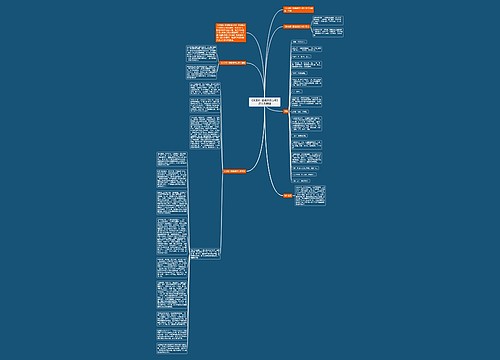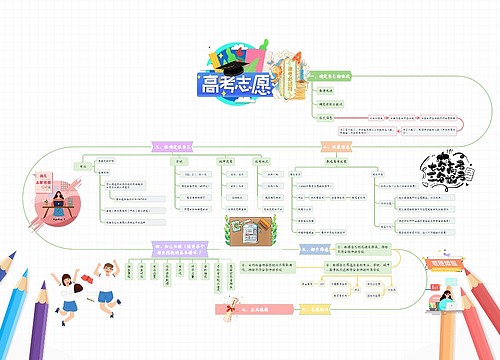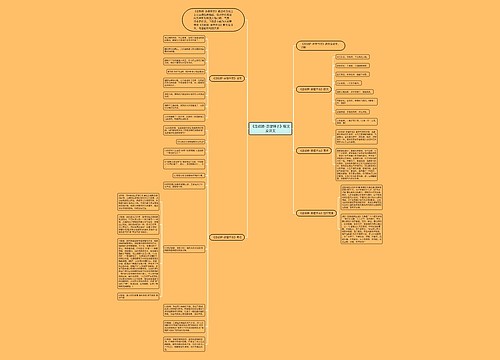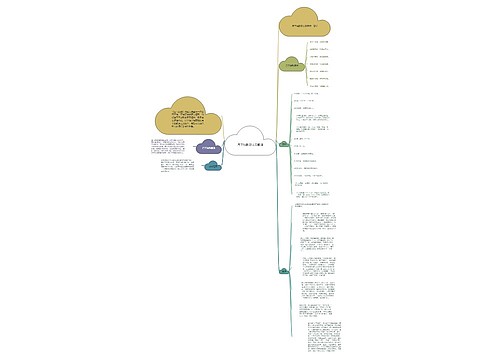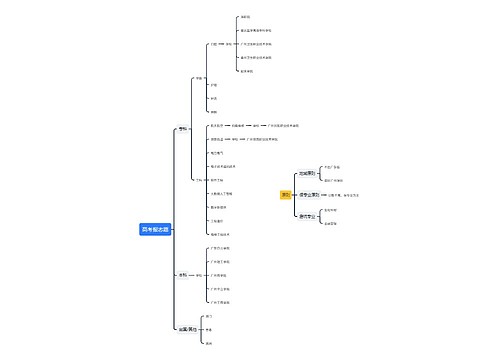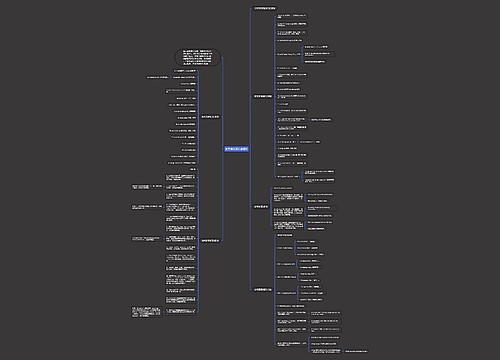
英语高考复习知识点思维导图
催眠
2023-04-24

英语高考复习知识点
英语
高考
复习
知识点
2023年高考即将到来了,高中的知识点也有很多,一起去了解看看都有哪些吧,下面小编为大家带来英语高考复习知识点,欢迎大家参考阅读,希望能够帮助到大家!英语高考复习知识点1、 especially, s
树图思维导图提供《英语高考复习知识点》在线思维导图免费制作,点击“编辑”按钮,可对《英语高考复习知识点》进行在线思维导图编辑,本思维导图属于思维导图模板主题,文件编号是:56fcc06b84564512b9e0b30d2786cd74
思维导图大纲
相关思维导图模版
英语高考复习知识点思维导图模板大纲
英语高考复习知识点归纳
2023年高考即将到来了,高中的知识点也有很多,一起去了解看看都有哪些吧,下面小编为大家带来英语高考复习知识点,欢迎大家参考阅读,希望能够帮助到大家!
英语高考复习知识点
1、 especially, specially
especially adv. 特殊地;尤其是
(1)侧重于多种事物或人中比较突出的。I like all the subjects at school, especially English. (尤其是英语)
(2) especially 后可接介词短语或从句。I like the Yuelu Mountains, especially in spring. (尤其是在春天) Noise is unpleasant, especially when you are trying to sleep.
specially 侧重特意地、专门地做某事 (后面常接for sb. 或to do sth.)
I made a chocolate cake specially for you.
2、 boring, bored, bore
boring adj. 令人厌烦的' The book is very boring.
bored adj. 感到厌烦的 I'm bored with the book.
bore vt. 令人厌烦 This book bores me.
有些表示情感的及物动词,有与bore类似的用法。如:interest, excite, surprise, amaze, frighten, astonish, move, inspire, touch, scare, disappoint, puzzle, worry 这类词的现在分词形式,为"令人……";过去分词形式,为"感到……"。
3、 except for, except, but, besides
表示"除了"的词或短语有:except; but; except for; besides; except that (when.。.) 等。
(1) except 和 but 都表示"除了……之外。没有",二者大多数情况下可以互换;但在no, all, nobody, nothing, no one 等词后多用 but。No one knows our teacher's address except / but him. (排除him)
(2) besides 除……之外,还……,有附加性。What other foreign languages do you know besides English? (English与other languages都属于know的范围)
(3) except for 只不过……,整体肯定,部分修正,用于排除非同类事物,for表示细节上的修正。 Your article is well written except for a few spelling mistakes.
4、 know, know of, know about
(1) know 用作动词,意思是"(直接地)获知,懂得,认识,熟悉"。I don't know whether he is here or not. / I know him to be honest.
(2) know of和know about的意思都是"(间接地)获知",指听别人说到或从书报上看到,二者没有什么区别。
5、 for example; such as
(1) for example"例如",用来举例说明某一论点或情况。一般只举同类人或物中的"一个"为例,作插入语,可位于句首、句中或句末。可用for instance替换。For example, air is invisible. / His spelling is terrible! Look at this word, for example.
(2) such as "例如",用来列举事物,一般列举同类人或事物中的几个例子。插在被列举的事物与前面的名词之间,as后面不可有逗号。Some of the European Languages come from Latin, such as French, Italian and Spanish.
[注意]如把前面所述情况全部举出,用that is或namely。
英语高考重要知识点
1. dream of/ about 梦想,想要
2. at a concert 在音乐会上
3. to be honest 老实说,说实话
3. attach v.系上,附上,附加,连接 attach … to …. 附上,连接
attach importance/value/significance/weight to认为…有重要性/价值/意义/分量(to为介词)
be attached to 连在...上, 附属于;热爱, 依恋
4. form the habit of doing sth. 形成…的习惯
5. give performances 演出
6. be paid in cash 得到现金
7. earn v. 赚,挣得,赢
earn extra money 挣外快 earn/make a/one’s living 谋生 make/earn money 挣钱
8. rely on/upon=depend on/upon 依靠 rely on sb. doing sth.= rely on to do sth. 指望/依靠某人做… rely on it that从句 相信,指望… reliable (adj.) 可依赖的,可靠的
9. during the broadcasts 在播出的时候 live television broadcast 实况电视广播, 现场电视广播
10. be familiar to 为…所熟悉
get/be familiar with=have a good knowledge of 熟悉, 通晓, 精通
11. in addition=what’s more 另外,加之,此外
in addition to…=besides 除…之外还
12. break up 解散
break down 破坏,损坏;停住运转,出故障;精神崩溃,身体垮掉;(中途)抛锚
break in 插话,打断 break into 破门而入 break out 突然发生,(疾病、火灾战争等)爆发 break off 突然停止或中断说话;断裂 break away 逃走,脱离出去
13. play jokes on=play a joke on 耍弄,开玩笑 make fun of 取笑 laugh at 嘲笑
14. a year or so 大约一年
15. go away 离去, 带走(with)
16. mix up 搅匀(拌和,混淆,搞乱)
17. sort out 分类;整理;区分;解决(问题)
sort…into… 把…分类,整理
all sorts of 各种各样的
18. in brief 简言之,一言以蔽之 in short 综上所述 to be brief简单地说 briefly(adv.)简要地
19. devotion (n.) 投入,热爱 devoted(adj.) 忠实的,深爱的 devote(v.) 献身,专心于
devote oneself to 献身,致力,专心于 be devoted to 专心于 devote…to… 把…用于/献给
20. Afterwards 随后,后来 forward(s) 向前 backward(s) 向后
21. as soon as 一…就…
22. be confident about/of/in 对…有信心
23. on a brief tour 短暂的巡演
24. went wrong. 出错了
25. be sensitive to 对…敏感
26. come up with 提出,想出(主意,计划,答案)
27. stick to 坚持,忠于,信守(原则,计划,决定,诺言,意见等) 注:to为介词
insist on 坚持(建议,看法,主张等)
28. above all 首先,最重要的是
first of all 首先,第一
29. pretend假装,伪装
30. pretend to be+ adj./n. 假装是 pretend to do假装做
pretend to be doing 假装正在做pretend to have done 假装已做过… pretend that从句 假装…
英语高考知识点
pleasant, pleasing, pleased
(1) pleasant 可作定语和表语。修饰事物,不能修饰人。因此句子的主语只能是表示事物的词语,而不能是人。意思是"令人愉快的,令人高兴的"。
I hope you'll have a pleasant holiday.
我希望你能过一个愉快的假期。
(2) pleasing "令人高兴的,令人愉快的",表示宁静、满意、令人满足之意。侧重于表示接受对象的情感,传递主观感受。比 pleasant 稍弱。主语可为人或事物。
An actor should have a pleasing personality.
表演者应当具有一种令人愉快的个性。
(3) pleased "高兴的,感到满意的"含义与glad基本相同。作表语时,句子的主语只能是"人",而不能是表示事物的词语。be pleased with 表示"对……表示满 意"之意。
She had a pleased look on his face.
她脸上露出了满意的表情。
英语高考知识点归纳
主谓一致
1、以单数名词或代词、动词不定式短语作主语时,谓语动词要用单数;主语为复数时,谓语用复数。(最基本的)
2、由and或both……and连接的并列成分作主语时,谓语动词用复数。
但并列主语如果指的是同一人、同一事物或同一概念,谓语动词用单数。
3、由and连接的并列单数主语之前如果分别由each, every, no修饰时,其谓语动词要用单数形式。
4、主语是单数时,尽管后面跟有 but ,except, besides, with ,as well as ,together with ,along with,like 等引导的介词短语时 ,谓语动词与前面的主语一致。
注意:主语和谓语之间插入了分词短语,谓语要与主语保持一致。
5、一些只有复数形式的名词,如people, police, cattle, clothes等作主语时,谓语动词要用复数。
6、集体名词family, class, team, group 等看作整体时,谓语动词用单数;看作每一个成员时,谓语动词用复数。
7、 当表示国家,城市,人名,书名,报纸,杂志,及组织机构等的专有名词做主语时,作为整体,谓语动词用单数形式。
The New York Times is reading all over the United States . 《纽约时报》
8、 news ,maths,physics ,politics等词貌似复数,实为单数,其谓语动词用单数.
9、"the +形容词"(如the poor ,the rich ,the young, the old , the dead ,the sick,the brave 等)作主语,谓语动词往往用复数
10、表时间、距离、价格、度量衡等的名词作主语时,谓语动词通常用单数。
11、由连词not……but……, or, either……or, neither……nor, not only…but also,等连接的并列主语,如果一个是单数,一个是复数,则谓语动词按就近一致原则,与最靠近它的主语一致。(这个就是就近原则)
12、There be句型、以here开头的句子谓语动词和靠近的主语一致。
13、a number of后面加复数名词或代词,其动词用复数形式;但the number of后面加复数名词或代词时,其谓语用单数。
14、在定语从句中主语是关系代词who , that , which , 谓语动词的数应与先行词的数一致。
注意:在"one of +复数名词+ who/that/which"引导的定语从句中,从句谓语的单复数取决 于one前是否有the (only)、the very。如果有,从句的谓语动词用单数,如没有the only, 就用复数形式。
英语高考知识点总结
用it 作形式主语的结构
(1) It is +名词+that从句
It is a fact that … 事实是……
It is an honor that …非常荣幸
It is common knowledge that …是常识
(2) it is +形容词+that从句
It is natural that… 很自然……
It is strange that… 奇怪的是……
(3) it +不及物动词+that从句
It seems that… 似乎……
It happened that… 碰巧……
(4) it is+过去分词+that从句
It is reported that… 据报道……
It has been proved that… 已证实……
主语从句不可位于句首的五种情况
(1) if引导的主语从句不可居于复合句句首。
(2) It is said , (reported) …结构中的主语从句不可提前。例如:
It is said that President Jingo will visit our school next week.
(3) It happens…, It occurs… 结构中的主语从句不可提前。例如:
It occurred to him that he failed in the examination.
(4) It doesn’t matter how/whether …结构中的主语从句不可提前。例如:
It doesn’t matter whether he is wrong or not..
(5) 含主语从句的复合句是疑问句时,主语从句不可提前。例如:
Is it likely that it will rain in the evening?
What 与that 在引导主语从句时的区别
What 引导主语从句时在从句中充当句子成分,如主语.宾语.表语,而that 则不然。例如:
What you said yesterday is right.
查看更多
相似思维导图模版
首页
我的文件
我的团队
个人中心



